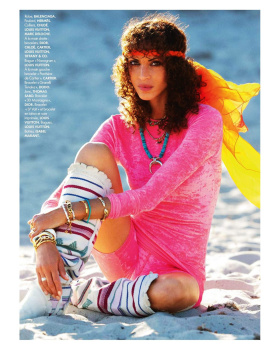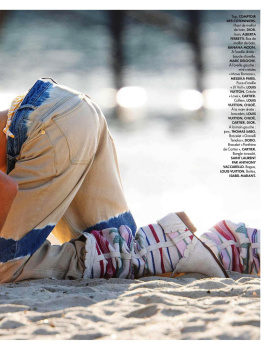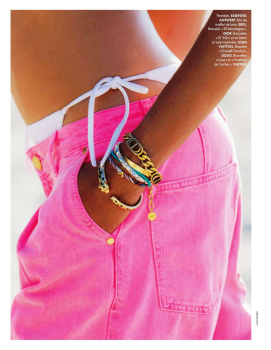You are using an out of date browser. It may not display this or other websites correctly.
You should upgrade or use an alternative browser.
You should upgrade or use an alternative browser.
- Joined
- Jul 14, 2017
- Messages
- 14,574
- Reaction score
- 20,869
Benn98
Well-Known Member
- Joined
- Aug 6, 2014
- Messages
- 42,530
- Reaction score
- 20,580
Toocomplicated
Well-Known Member
- Joined
- May 31, 2017
- Messages
- 2,786
- Reaction score
- 388
Nadege is is Reunionese Creole on her mom's side. She's obviously not 100 percent Europeanrunwayblogs.com
To be sure fashion has had a long love affair with the “exotics,” but it’s also safe to say that it prefers it’s ethnicity’s (The great Alek Wek being an exception) somewhat watered down. Or as Lauren Hutton once said so eloquently, “dipped in tea” when referring to black models such as Beverly Johnson.
Take the roster of supers who dominated most of the 90’s for example. Out of the top 10 highest earning models at the time, 6 were of mixed heritage (though you can’t be faulted for not knowing that1. Yasmeen Ghauri: half Pakistani-half German, 2. Christy Turlington: half-American-half-Salvadorian, 3. Nadege du Bospertus: half French-half Greek, 4. Helena Christiansen: half Danish-half Peruvian, 5. Yasmin Le Bon: half Iranian-half British, 6. Naomi Campbell: half Chinese- half Jamaican.
When you take this into account, the induction of a model like Chanel Iman (half Korean-half African American) into that rarified group doesn’t seem so groundbreaking after all. It also bares to remember that not so long ago, in the early 90’s, there was a teenage model by the name of Kimora lee (Simons). A half-Japanese –half African American beauty who became a Lagerfeld favorite and modeled for him on the Chanel Catwalk (in the same way Devon Aokie, the half Japanese-half Irish model went on to do so as well).
Around collection time one thing I like to do on Style.com is to go through the pictures of Jean Paul Gaultiers’ shows, because out of all the designers he’s one of the few who puts ethnic unknowns on his catwalk. But you get the feeling that they were picked because of their striking beauty and the character they convey to the clothes rather than filling in a quota. I think that’s one of the reasons I don’t get bored watching a Gaultier show, because I’m not seeing clones coming down the runway a million times.
But what I did find odd was that Style.com included the names of the models and agencies by the photos except for a certain Indian model, who was stunning. I am quick to say that I don’t think that was done out of racism so much as that they simply didn’t know who she was. The same thing happened on earlier coverage for the Gaultier Couture show when the model Naomie Lenoir’s name was not included by her picture. But if you’re in the fashion industry how would you not know whom Naomie Lenoir is?
I realize this post has gone longer than it should, but there is an interesting book I highly recommend that is a sort of cultural, social, and anthropological study of skin politics within the fashion industry. It’s called “Black & Beautiful: How women of Color Changed the Fashion Industry” by Barbara Summers. I found out about the book after Dorthea Towles had passed away last year, and I became intrigued by her fascinating life. She was the first African American model to make it big in Paris. Right at the end of the war around 1947 or 1948, she packed her bags and moved to Paris where she modeled for the likes of Dior and Balmain. The book includes a chapter on her as well as other notables such as Elizabeth “princess of Toro” who modeled for Saint Laurent and appeared on the cover of Harper’s Bazaar in the 60’s, as well as Givenchy’s love for the black models in his salon. The book definitely gave me some insight into a world that I never knew existed because we’ve become so conditioned to seeing certain types of face.
Similar Threads
- Replies
- 57
- Views
- 12K
- Replies
- 0
- Views
- 3K
Users who are viewing this thread
Total: 3 (members: 0, guests: 3)
New Posts
-
-
-
Which ONE dream item (clothing, bag, shoes) would you pick to own and why? (11 Viewers)
- Latest: avonlea002
-
-














































